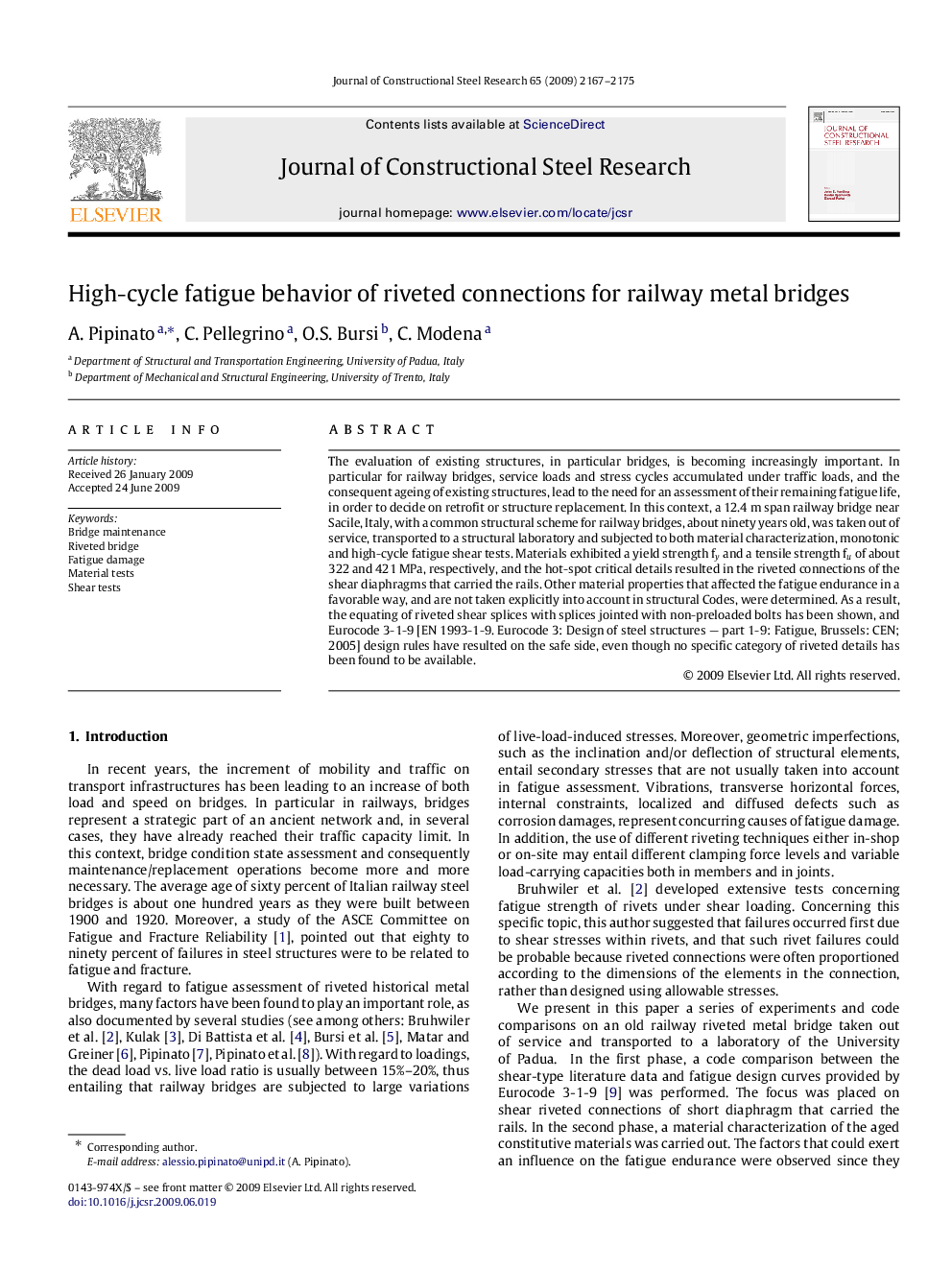| Article ID | Journal | Published Year | Pages | File Type |
|---|---|---|---|---|
| 286053 | Journal of Constructional Steel Research | 2009 | 9 Pages |
The evaluation of existing structures, in particular bridges, is becoming increasingly important. In particular for railway bridges, service loads and stress cycles accumulated under traffic loads, and the consequent ageing of existing structures, lead to the need for an assessment of their remaining fatigue life, in order to decide on retrofit or structure replacement. In this context, a 12.4 m span railway bridge near Sacile, Italy, with a common structural scheme for railway bridges, about ninety years old, was taken out of service, transported to a structural laboratory and subjected to both material characterization, monotonic and high-cycle fatigue shear tests. Materials exhibited a yield strength fy and a tensile strength fu of about 322 and 421 MPa, respectively, and the hot-spot critical details resulted in the riveted connections of the shear diaphragms that carried the rails. Other material properties that affected the fatigue endurance in a favorable way, and are not taken explicitly into account in structural Codes, were determined. As a result, the equating of riveted shear splices with splices jointed with non-preloaded bolts has been shown, and Eurocode 3-1-9 [EN 1993-1-9. Eurocode 3: Design of steel structures — part 1-9: Fatigue, Brussels: CEN; 2005] design rules have resulted on the safe side, even though no specific category of riveted details has been found to be available.
